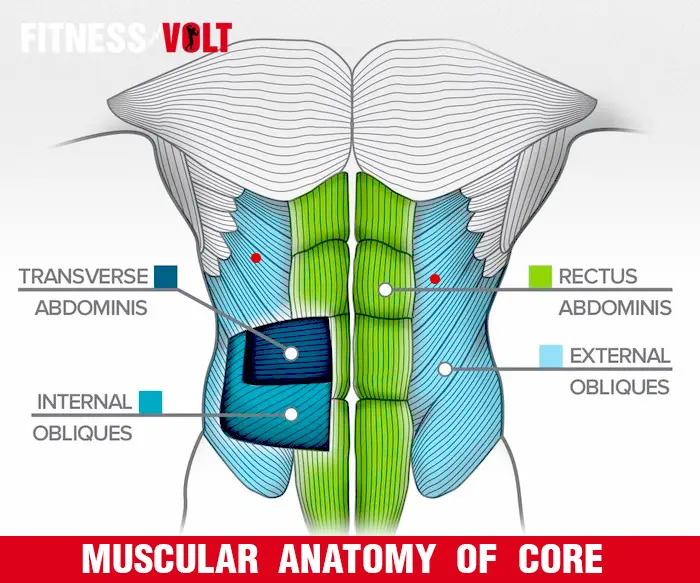When it comes to abs training, it’s easy to fall into the same old routine of doing endless sets of sit-ups, oblique crunches, and planks. While these exercises ARE effective and often feature in great core workouts, they are not exactly cutting edge. And, if you’ve been training for more than a couple of years, you’ve probably done thousands of reps of these moves.
Doing the same thing over and over is a sure-fire way to get stuck in a workout rut.
If your abs workout is getting stale, and you want an exercise that will breathe life into your core training, look no further than the infamous body saw!
How To Master The Body Saw:
What is the body saw?
The body saw is a simple but highly effective bodyweight core exercise. It’s a bit like a plank, but one that’s been jacked up to the max on caffeine and creatine! If you are used to holding a plank for a couple of minutes at a time, this exercise will be a rude awakening for your abs – one that triggers new muscle growth and increased levels of strength.
The body saw, like the plank, is an isometric, anti-extension core exercise. That means you won’t be moving much, but you’ll still have to work hard to maintain your position.
Level Up Your Fitness: Join our 💪 strong community in Fitness Volt Newsletter. Get daily inspiration, expert-backed workouts, nutrition tips, the latest in strength sports, and the support you need to reach your goals. Subscribe for free!
However, unlike the plank, where you remain totally motionless, with the body saw, you purposely move your body. This means you’ll have to work much harder to keep your body properly aligned, making it much tougher on your abs.
What muscles does the body saw work?
Like planks, the body saw works pretty much every muscle that makes up what exercise experts call your core. In simple terms, your core is your entire midsection. The main muscles that make up your core are:
Rectus abdominus: Located on the front of your abdomen, this is the muscle that, when you are very lean, creates that famous six-pack shape. Its main job is flexion of your spine, although it also plays a role in lateral flexion too.
Obliques: Essentially your waist muscles, the obliques are responsible for the rotation and lateral flexion of your spine.
Transverse abdominus: A deep core muscle that encircles your internal organs like a corset or weightlifting belt. Called TVA for short, this muscle supports your spine from within by increasing intra-abdominal pressure, or IAP for short.
Diaphragm: The diaphragm is your primary breathing muscle and also makes up the top of your core cylinder. Working with your transverse abdominus, the diaphragm helps create the intra-abdominal pressure that keeps your spine stable.
Pelvic floor: This figure-eight-shaped muscle is the bottom of your core cylinder. It also supports your internal pelvic organs. It, too, plays a crucial role in maintaining IAP.
How to perform the body saw
The body saw is a simple exercise, but that doesn’t mean it’s easy. In fact, you may find it uniquely challenging, even if you are a proficient “planker.” The good news is that this exercise is easy to modify to suit all levels of core strength – from beginner to very advanced.
How to do the body saw
- On a smooth area of floor, get down and into the plank position. Your body should be straight with your weight resting on your toes and forearms.
- Place your feet on a small towel so that they can slide. You can also use a specially designed glider pad. Alternatively, take your shoes off and work out in just your socks.
- Brace your abs, glutes, quads, shoulders, and arms, so that your entire body feels tense. Do not hold your breath but take shallow, diaphragmatic breaths instead.
- Maintaining tension throughout your body, move your elbows forward and back, so your feet slide out and in. This should resemble the sawing motion that gives this exercise its name. Keep your movements slow, smooth, and deliberate to maintain constant tension on your abs.
- The further you extend your arms out in front of you, the harder this exercise will become, so adjust your range of motion accordingly.
- Keep going until your hips start to drop and you have to stop, or do two to four sets of 8-15 reps, resting 60-90 seconds between each one.
The benefits of body saws
What makes the body saw such a brilliant exercise? Here are five reasons you should include this exercise in your core workouts.
1 – increased difficulty: While the plank is an excellent exercise, if you can hold it for more than a minute or two, it’s not really challenging enough to do you much good. Doing any core exercise for more than a couple of minutes per set is a waste of your valuable time.
Body saws are harder than planks, and that means you won’t have to do them for as long. This will save you time and make your workouts more productive.
2 – changing lever lengths: As you saw your arms back and forth, the distance between the load and your base of support changes. This means the muscular tension shifts along the length of your core, momentarily affecting different areas of your midsection. This means your abs get a much more complete workout and are challenged from top to bottom.
3 – count reps, and not time: Planks are usually held for a predetermined length of time. That means you need to keep one eye on your watch. Body saws are done for reps, which makes a nice change from clock watching.
Level Up Your Fitness: Join our 💪 strong community in Fitness Volt Newsletter. Get daily inspiration, expert-backed workouts, nutrition tips, the latest in strength sports, and the support you need to reach your goals. Subscribe for free!
4 – easy to modify: If you find this exercise too hard, simply bend your legs and drop to your knees. This makes the body saw much less demanding. Using a smaller arm action also makes this exercise easier.
But, if you have a strong core, you can use a much longer arm action to really challenge your abs. You could even do a sort of drop set by starting off with a large arm movement, reducing it as you get tired, and then finally dropping to your knees for the last few reps. By the end, your abs will be screaming for mercy!
5 – increased instability: In nature, your core’s main job is stabilizing your spine. When you do planks, the floor is entirely stable, so while this is an effective exercise, it does not really represent the challenges your core has to overcome out in the “real world.”
In contrast, the body saw involves movement and, therefore, more instability. Your core must work hard to keep your spine stable despite the movement of the rest of your body. This means the body saw is a more functional exercise as it more closely replicated the demands of life outside the gym.
Body saw variations
The basic body saw is a tremendous exercise, but that doesn’t mean it’s the ultimate version of this core building move. Here are a few additional body saw variations to try.
1 – Push-up body saw
With your arms straight, you are going to have to work even harder to keep your body straight and stable. This variation also increases lat and pec recruitment.
How to do it:
- Adopt the push-up position with your arms, legs, and body straight. Place your feet on a towel or remove your shoes.
- Keeping your core, legs, glutes, and upper body braced, slide your feet backward and away from your hands. Move as far as you can while maintaining proper alignment.
- Pull yourself forward again until your arms are vertical and repeat.
2 – TRX body saw
TRX body saws add an extra element of instability to this exercise to make it even more challenging. Also, because your feet swing instead of slide, you’ll need to work extra hard to maintain control of your movements.
How to do it:
- Place your feet in the TRX handles and adopt the plank position, with your arms bent and your weight on your forearms.
- Push your arms out in front of you and swing your weight back as far as you can while keeping your core braced.
- Return to the starting position and repeat.
3 – Stability ball body saw
Stability balls are a great core training tool, and you can use them for making body saws more challenging too.
How to do it:
- Lean forward and place your forearms on either side of the top of a stability ball. Walk your feet back and into a plank position. Brace your core, glutes, and legs.
- Roll the ball out and away from you and then back in.
- Too hard? Bend your legs and rest on your knees to make this exercise easier.
Important body saw tips
Avoid mistakes and get the most from body saws with these handy hints and tips!
Control your range of movement – if you saw too far, you may find yourself unable to maintain your straight body position. If this happens, your hips will drop out of alignment, putting a lot of stress on your lumbar spine. This could cause injury. Reduce your range of motion if you feel you are losing your alignment.
Don’t hold your breath – holding your breath during body saws will rob your muscles of the oxygen they need to function correctly and will also increase your blood pressure. Instead, make sure you breathe using your diaphragm and match your breaths to your movements. Inhale as you move your feet away and exhale as you return to the starting position.
Stop if your back hurts – if you feel any pain in your lower back, stop your set immediately. Back pain could mean your core is not adequately braced, either because of muscle weakness, over-extension, or improper exercise technique. Determine the cause of the pain before trying again. If you still feel pain during this exercise, it could be that it’s just a little too hard for you right now, and you should stick to planks for a bit longer.
Don’t do this exercise too often – body saws are a tough core exercise. That means you’ll need time to recover after doing them. Resist the temptation to do this move more than 2-3 times a week, and don’t do it on consecutive days. Work hard, but then give yourself 48-72 hours to rest before doing it again. That way, your muscles have a chance to rest, recover, and grow.
Wrapping up
Planks are one of the most well-known, most widely performed core exercises on the planet. There are even apps dedicated to this single, popular exercise. But, as good planks are, most exercisers master them pretty quickly and soon progress to doing them for several minutes at a time.
Once that happens, this once potent exercise ceases to be so effective.
Swap your planks for body saws and breathe some new life into your core workouts. A few sets of ten will fire up your abs and remind you what a good core workout should feel like. Whatever your core training goal is, doing body saws will help you achieve it sooner.











